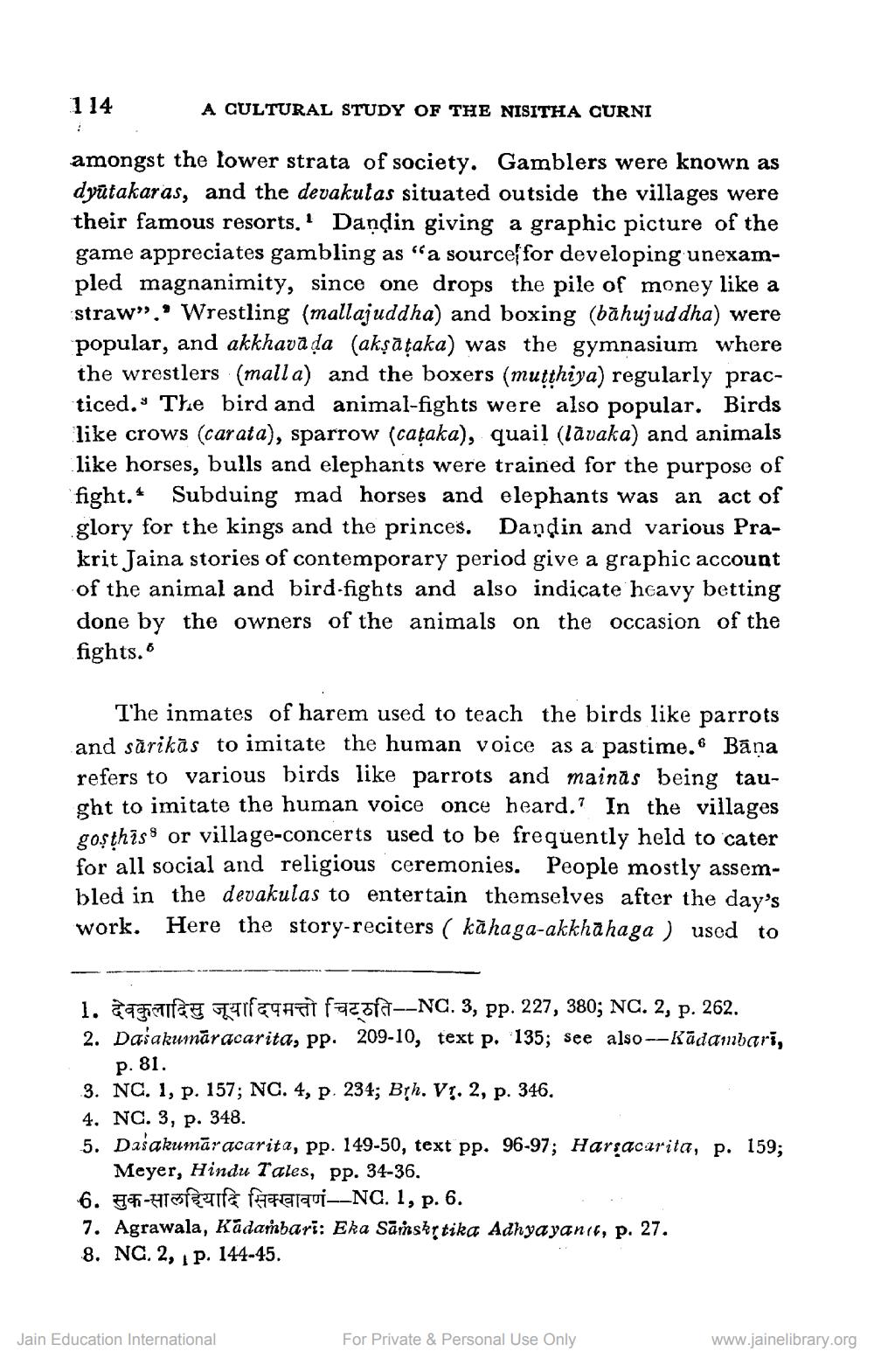________________
114
:
A CULTURAL STUDY OF THE NISITHA CURNI
amongst the lower strata of society. Gamblers were known as dyutakaras, and the devakulas situated outside the villages were their famous resorts. Dandin giving a graphic picture of the game appreciates gambling as "a source for developing unexampled magnanimity, since one drops the pile of money like a straw".' Wrestling (mallajuddha) and boxing (bahujuddha) were popular, and akkhavāḍa (akṣāṭaka) was the gymnasium where the wrestlers (malla) and the boxers (mutthiya) regularly practiced. The bird and animal-fights were also popular. Birds like crows (carata), sparrow (caṭaka), quail (lāvaka) and animals like horses, bulls and elephants were trained for the purpose of fight.* Subduing mad horses and elephants was an act of glory for the kings and the princes. Dandin and various Prakrit Jaina stories of contemporary period give a graphic account of the animal and bird-fights and also indicate heavy betting done by the owners of the animals on the occasion of the fights.
B
The inmates of harem used to teach the birds like parrots and sarikās to imitate the human voice as a pastime. Bāṇa refers to various birds like parrots and mainās being taught to imitate the human voice once heard. In the villages gosthis or village-concerts used to be frequently held to cater for all social and religious ceremonies. People mostly assembled in the devakulas to entertain themselves after the day's work. Here the story-reciters (kahaga-akkhāhaga) used to
1. Zagaty quifq
fazza--NC. 3, pp. 227, 380; NC. 2, p. 262.
2. Dasakumāracarita, pp. 209-10, text p. 135; see also--Kādambarī, P. 81.
3. NC. 1, p. 157; NC. 4, p. 234; Brh. Vr. 2, p. 346.
4. NC. 3, p. 348.
5. Dasakumaracarita, pp. 149-50, text pp. 96-97; Harsacarita, p. 159; Meyer, Hindu Tales, pp. 34-36.
6. सुक - सालहियादि सिक्खावणं - NC. 1, p. 6.
7. Agrawala, Kadambari: Eka Samskṛtika Adhyayani, p. 27.
8. NC. 2, p. 144-45.
6
Jain Education International
For Private & Personal Use Only
www.jainelibrary.org




